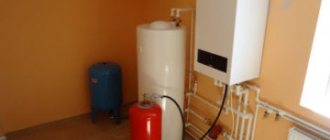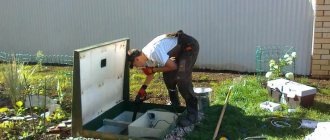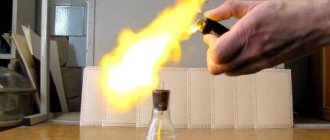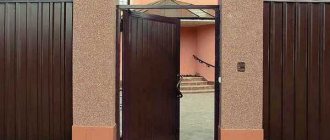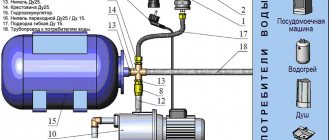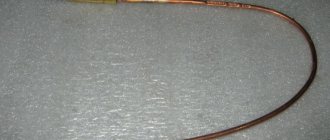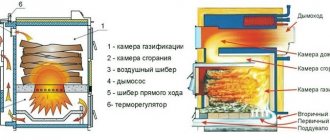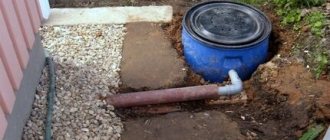Almost all electricity is produced by installations using energy from natural resources. The pace of production is constantly increasing, and minerals will sooner or later run out. In this regard, promising developments are already underway, new technologies are being introduced that act as alternative sources of electricity. One such option is wind power plants, used in the manufacturing sector and in the private sector. By converting wind energy into electricity, they are able to meet the basic power needs of appliances and electrical equipment.
Wind turbine device
Wind generators are absolutely environmentally friendly and are able to provide free energy to consumers for an unlimited time. Wind generators - WPPs have different powers, which makes it possible to use them in different areas.
Maximum efficiency of a wind power plant can be achieved by installing it in places with constant active air flows. Usually mountains and hills, sea and ocean shores and other similar conditions are used for this. The main part of the installation is the impeller, which performs the function of a turbine. In most cases, three-bladed wind farm designs in the form of a propeller are used, installed at a high altitude from the earth's surface.
In order to obtain the greatest effect, the blades together with the rotor are installed in the optimal position using special mechanisms, depending on the direction and strength of the wind. There are other designs - drum ones, which do not depend on the above factors and do not require any adjustments. However, if the efficiency of propeller units is at the level of 50%, then for drum devices it is much lower.
Each air power plant, regardless of design, is completely connected to the action of air flows, which often change their performance. This in turn leads to changes in the number of impeller revolutions and the electrical power produced. This situation requires coupling of the generator and the electrical network using additional equipment.
As a rule, batteries are used for this together with inverters. First, the generator charges the battery, for which the uniformity of the current does not matter. Next, the battery charge, converted in the inverter, is transferred to the network.
The propeller structures of wind farms can be controlled if necessary. If the wind speed is too high, the angle of attack of the blades is changed, down to the very minimum. This leads to a reduction in the wind load on the turbine. However, under the influence of hurricanes, the impellers of wind power plants are often subject to deformation, and the entire home installation fails. Negative impacts cannot be completely avoided, since electric generators are located at an average height of 50 m. Due to this, it is possible to use the stronger and more stable winds that prevail at high altitudes.
Making a windmill with your own hands
The main work to be done is the manufacture and installation of a rotating rotor. First of all, you should choose the type of structure and its dimensions. Knowing the required power of the device and production capabilities will help determine this.
Most of the components (if not all of them) will have to be made independently, so the choice will be influenced by what knowledge the creator of the design has and what instruments and devices he is best familiar with. Usually, a test wind turbine is first made, with the help of which the performance is checked and the parameters of the structure are specified, after which they begin to manufacture a working wind generator.
Braking system operation
At high air flow speeds, wind power plants can fail. To prevent this from happening, the design uses a braking system. It uses the force of the rotating magnets of the rotor. They not only induce current in the stator windings, but also in certain situations slow down the movement of the shaft. For this purpose, it is necessary to create a short circuit that causes resistance and slows down the rotation.
Automatic braking occurs when wind speeds exceed 50 km/h. If the speed increases to 80 km/h, the blades stop completely. The design of the turbine allows for the most efficient use of wind energy and, through double conversion of energy, produces electric current. The presence of a rechargeable battery makes it possible to use electrical appliances in the complete absence of wind.
Some installation designs are equipped with a wind sensor that collects information about air flow parameters. Ultimately, the output power of the wind turbine will depend on the power of the connected inverter. Based on this indicator, the maximum possible number of connected devices is determined. In order to increase the output power of the installation, it is recommended to connect several inverters in parallel. In three-phase systems, each phase has its own inverter.
Specifications
When purchasing a charge controller for a wind generator, you must carefully study its data sheet. When choosing, the following characteristics are important:
- power - must correspond to the power of the wind turbine;
- voltage - must correspond to the voltage of the batteries installed on the windmill;
- Max. power - indicates the maximum permissible power for the controller model;
- Max. current - indicates the maximum power of the wind generator the controller can operate with;
- voltage range - max. and min. battery voltage for adequate operation of the device;
- display capabilities - what data about the device and its operation is displayed on the display of a particular model;
- operating conditions - at what temperatures and humidity levels the selected device can operate.
If you cannot select a charge control device yourself, contact a consultant and show him the technical data sheet of your windmill. The device is selected in accordance with the capabilities of the wind installation. Incorrect operating conditions and deviations from the voltage range will have a detrimental effect on the operation of the entire wind system.
Classification
The main criteria that determine the types of wind turbines are the following:
- The difference is in the number of blades. High-speed and low-blade devices have up to 4 blades, and 4 and higher belong to low-speed multi-blade devices. The fewer the number of blades, the higher the engine speed.
- Rated power value. Household - up to 15 kW, semi-industrial - from 15 to 100 kW, industrial - from 100 kW to 1 MW. The boundaries between the indicators are quite arbitrary, so settings are applied where it is really necessary.
- Axis direction. Two types are used in the designs. In the first case, this is a horizontal axis located perpendicular to the air movement, reminiscent of a regular weather vane. Such generators are characterized by higher efficiency and reasonable cost. The second option is a vertical axis, which makes the generator design more compact. It does not depend on the direction of the wind, and its blades are made in the form of turbines. The axle load is significantly reduced, therefore the power of such installations is much less. Some power plants simultaneously use several generators with different axes, connected in a network, which makes it possible to obtain high power in a relatively small area.
Advantages and disadvantages
The advantages of using wind energy, and therefore wind generators, include the following:
- Wind energy is a renewable energy with inexhaustible resources;
- Environmental friendliness of the energy resource and the electrical energy production process;
- The ability to quickly install installations and provide consumers with electrical energy;
The disadvantages include the following:
- The efficiency of installations depends on the time of year, weather conditions and the region where the unit is installed;
- High noise level during operation of the units;
- Danger for the feathered inhabitants of the region where the wind generator is installed;
- In the industrial production of electrical energy, when using wind generators, significant areas of land are required.
Features of choice
The main criterion that buyers follow is the size of the wind turbine. The larger its size, the higher the power generated. Therefore, when choosing wind power plants for your home, you need to calculate your monthly energy consumption in advance. The result obtained is multiplied by 12 months.
Further calculations for a private house are carried out using the formula: AEO = 1.64 x D x D x V x V x V, in which AEO is the electricity consumed per year, D is the rotor diameter in meters, V is the average annual wind speed in m/s . By substituting the required values, you can easily calculate the dimensions of the required installation.
When purchasing a power plant, you should think in advance about its location. In this case, the following factors are taken into account:
- The area near the generator must be free of buildings, structures, trees and other factors that reduce the productivity of the installation. The existing interference is located at a distance of no closer than 200 meters from the installation site.
- The height of the structure for mounting the generator must be at least 2-3 meters higher than the interference in the adjacent area.
- The distance from residential buildings is at least 30-40 m, since when the blades rotate, some noise is created, causing some discomfort to others.
- It is necessary to take into account the average annual changes in weather conditions, when different amounts of electricity will be generated in the same place during the year.
Wind generator operating principle
The operating principle of a wind generator is based on the conversion of the kinetic energy of the wind force into the rotational energy of the generator shaft. For vertical wind turbines, a vertical axis is connected to a vertical rotor. The generator and rotor are located at the bottom of the structure. The blades are fixed in a vertical axis.
Rotating, the blades force the generator rotor to rotate, which begins to produce alternating and unstable current. This current goes to the controller, which converts it into constant voltage and charges the batteries. From the battery, power goes to the inverter, the purpose of which is to convert direct current into alternating current with a voltage of 220 V or 380 V, which is supplied to electricity consumers.
Advantages of wind generators
Wind power plants have been used for a long time in everyday life, in production and other areas.
During this time, it was possible to identify their main positive qualities and advantages:
- The wind energy used for wind farms is free and, most importantly, renewable. The devices do not pollute the environment and do not emit any harmful substances. In the future, it is planned to use environmentally friendly wind power plants in Russia even more widely, which will reduce the number of conventional installations with harmful emissions.
- The dependence of power supply through central electrical networks is reduced.
- Broad prospects for further development and implementation of new progressive technologies, and these are not the last advantages of these installations.
- Gradual reduction in energy costs, which cannot be avoided at the initial stage. Over the past 20 years, the cost of equipment and components has decreased by approximately 80%. Wind energy is becoming the most profitable among all alternative sources of electricity.
- Wind turbines have a fairly long service life of 20-30 years. During this period, the surrounding landscape remains undamaged.
- Easy to assemble and further use. A wind power plant can be installed very quickly, and repair and maintenance costs are relatively low. The generated electricity quantitatively exceeds the expended wind energy by approximately 85 times. Losses during electricity transmission are relatively low.
Efficiency
It is quite simple to evaluate the energy efficiency of a unit of a certain type and design and compare it with the performance of similar engines. It is necessary to determine the wind energy utilization factor (WEF). It is calculated as the ratio of the power received at the wind turbine shaft to the power of the wind flow acting on the surface of the wind wheel.
The wind energy utilization rate for various installations ranges from 5 to 40%. The assessment will be incomplete without taking into account the costs of design and construction of the facility, the quantity and cost of generated electricity. In alternative energy, the payback period for wind turbine costs is an important factor, but it is also necessary to take into account the resulting environmental effect.
Geography of application
Wind energy is most widespread on the west coast of the Atlantic, in particular in Germany. There are the best conditions - smooth and strong winds, optimal climatic indicators. But the main reason for the widespread use of wind power plants in this region was the lack of opportunities for the construction of hydroelectric power plants, which forced the governments of the countries in this region to use available methods of generating electricity. At the same time, there are installations in the Baltic region, Denmark, and Holland.
Russia is still lagging behind in this matter; over the past decade, barely a dozen wind farms have been commissioned. The reason for this lag lies in the great development of hydropower and the lack of proper conditions for the operation of industrial wind power stations. However, there is an increase in the production of small installations capable of providing energy to individual estates.
Manufacturers
The domestic industry has established serial production of a wide range of household wind generators. Their parameters are shown in the table:
| Model | Manufacturer | Type | Power | Note |
| VG 0.25 | Vetro Svet, Russia | G | 250 W | — |
| VEU-3(4) | SKB Iskra, Russia | IN | 3 kW | 4-blade model |
| Series L | Wind power, Russia | IN | 0.8 – 10 kW | — |
| RKraft | Germany | G | 0.5 – 5 kW | — |
| Wind Generator M300 | China | IN | 100 – 270 W | 6-blade rotor with a diameter of 1 m, weight 11 kg, does not have a controller |
| Condor Home | EDS Group, Russia | G | 500 W | 3-blade fiberglass rotor Maximum wind speed 25 m/s Weight 56 kg |
Note: G – horizontal, V – vertical
Review of prices for popular models
The cost of wind generators is high. This moment is the most difficult to overcome for the spread of wind energy technologies. Many home owners would love to install wind turbines on their property, but do not have the funds to purchase them. An installation capable of providing lighting to an area costs about 100 thousand rubles.
A more powerful design that allows you to supply electricity to a cottage will cost 250 thousand.
A wind farm capable of supporting a small farm costs about 500 thousand rubles. And this is not the limit. At such prices, one cannot expect a rapid spread of wind generators, so all hope is for the emergence of domestic models that can solve the issue of high cost of equipment. Alternatively, you can buy a relatively inexpensive Chinese model. Such devices cannot be repaired, being, in fact, disposable, but their price is much lower than the cost of Western models of similar power.
Varieties
In order to choose the right wind generator, you must first take into account its technical parameters. Modern models differ in the following number of characteristics:
- The number of propeller blades. A large number of screw elements complicates the design. However, the more blades, the lower the wind speed needed to start the mechanism.
- Type of blade material. Models with rigid propellers are stronger and more durable, but also much more expensive than their sailing counterparts.
Multi-blade wind generator for your home Source ytimg.com
- The location of the rotation guide. Divided into vertical and horizontal. The former are stronger and more sensitive, the latter have better performance.
- Possibility of changing step characteristics. They differ in models with variable and constant pitch. Products with variable step parameters allow you to increase speed, and therefore productivity. However, they are more complex, bulky and expensive.
Good to know! Factory models widely available today are quite expensive. Therefore, those who want to install such an autonomous power plant often have the question of how to make a wind generator. Homemade analogues are often made from car generators connected according to a circuit with a similar 12-volt battery.
Capacity of industrial stations
Industrial wind farms have very high power, capable of supplying large settlements or regions. For example, the Gansu wind farm in China has 7965 MW, Enercon E-126 produces 7.58 MW , and this is not the limit.
It should be noted right away that we are talking about leaders in wind energy; other models produce much less energy. However, when combined into large stations, wind turbines are capable of producing quite a sufficient amount of electricity. The combined complexes generate a total power of 400-500 MW, which can easily be compared with the productivity of hydroelectric power stations.
Small stations have more modest indicators and can only be considered as point sources that supply a limited number of consumers.
Legal Requirements
In order for a wind generator installed on a private house or adjacent territory to be consistent with the legal framework, it must meet the following series of requirements:
- Power is not higher than 5 kW. Equipment with this indicator refers to household devices that do not require control by energy regulatory institutions.
- Absence of municipal-territorial and technical restrictions on the occupied area. Some private territories may be located inside specially protected, rare natural or other status objects, within which the placement of certain technical equipment is prohibited.
- Coordination with neighbors (interference, noise, falling shadow, etc.). All types of interference that arise from the installation can cause complaints not only from neighbors, but also from nearby enterprises and transmission centers.
- Mast height to meet local and federal requirements. The height of the mast usually does not exceed 15 meters, but there may be exceptions. Therefore, before constructing a tall structure, you need to make sure that it meets all the necessary requirements - no power lines, away from the airport landing line, etc.
Windmill on the facade of a private house Source more-el.com
- No disturbance to local or migratory species. Birds often get caught in the blades of power plants. Therefore, the choice of location for installing a mast with a propeller should exclude previously known flight paths.
Recommendation! To exclude all possible claims from neighbors or regulatory authorities, it is better to collect in advance all the necessary documents, technical passports and certificates confirming that a wind turbine for a private home is safe and harmless. In addition, it is better to install the factory model in full accordance with the parameters recommended in the technical documentation.
